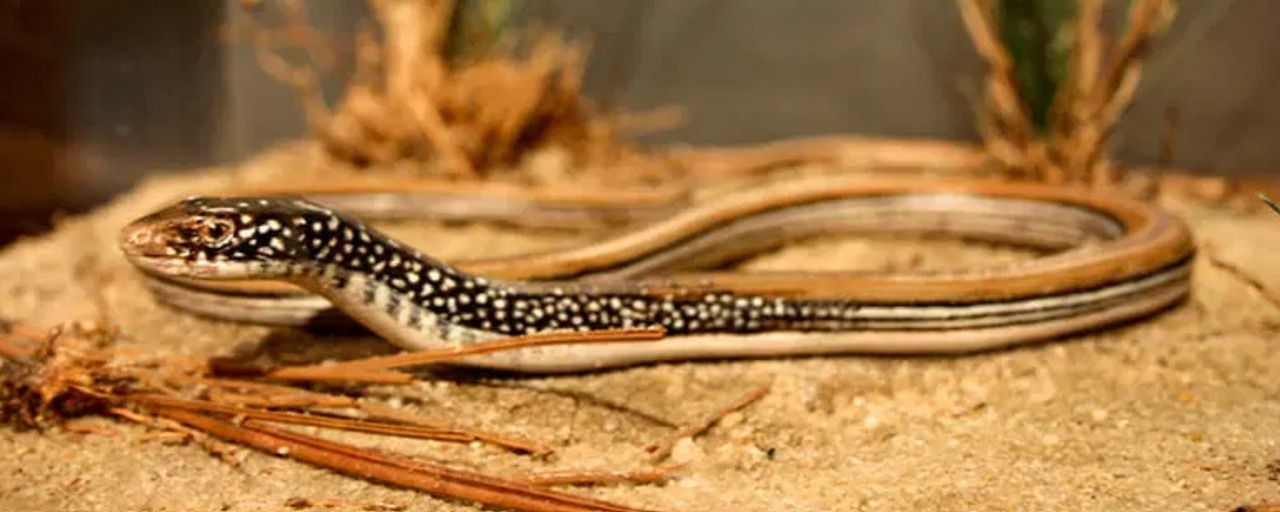That thing you saw wriggle through your grass might not be a snake after all
Have you ever thought you saw a strange looking snake wriggling its way across the road or through your lawn?
It may not have been a snake, but, instead, a legless lizard.
The eastern glass lizard can be a common sight throughout most of the southeastern region of North America.
How are they distinguishable from snakes? What do they look like?
The unique lizard is the most common species of glass lizards in the state and are frequently mistaken for snakes given their legless appearance. They have long slender bodies, smooth scales and have no limbs.
Ranging from 18 to 43 inches in length, “glass lizards are long, slender, legless lizards that superficially resemble snakes. They differ from snakes, though, in that they have movable eyelids, external ear openings, and inflexible jaws. The eastern glass lizard is the longest and heaviest glass lizard in our region and is generally light brown or yellowish to greenish in coloration,” according to the Savannah River Ecology Laboratory through the University of Georgia.
The eastern glass lizard can best be distinguished by the lack of a dark-colored dorsal stripe or dark markings below the lateral groove and the presence of several vertical whitish bars just located behind the head, the lab states.
These glass lizards are commonly found in pine flatwoods, sand dunes and other sandy habitats and are also found around wetlands, according to Herps of NC.
The eastern glass lizard actively forages by day in open habitats but can also be found taking refuge beneath boards, logs and other debris.
“When seized, glass lizards commonly break off all or part of their tail (which makes up more than half of their total length) and will later regrow. With the predator distracted by the wriggling tail, the lizard is free to escape,” the University of Georgia laboratory states.
Glass lizards earned their name by their ability to seemingly “shatter” like glass by breaking their tail, which can often be broken off into several pieces.
If you happen to come across one of these lizards there is no need to be alarmed. Glass lizards are a nonvenomous species and are completely harmless to humans, detailed the Encyclopedia of Alabama.
They eat a wide selection of different insects, spiders and other invertebrates as well as some small reptiles.
In addition, the female lizard will lay several eggs under a log, board, leaves or other overhead object in the early summer. She will attend to these eggs, typically a clutch of seven to 15, until they hatch later in the summer. She remains coiled around the eggs until they hatch 50 to 60 days later. This happens after their mating season, which occurs throughout late May and early June, the Encyclopedia of Alabama states.
Hatchling length for this glass lizard ranges around 7 inches.
Female glass lizards do not actively defend their eggs and will usually abandon them if the nest becomes uncovered.
So, next time you think you might see a snake that is moving differently, it might not even be a snake at all. It could be a glass lizard. If it thinks you may be a threat, it might just detach its tail.
___
(c)2023 The Island Packet (Hilton Head, S.C.)
Visit The Island Packet (Hilton Head, S.C.) at www.islandpacket.com
Distributed by Tribune Content Agency, LLC.
